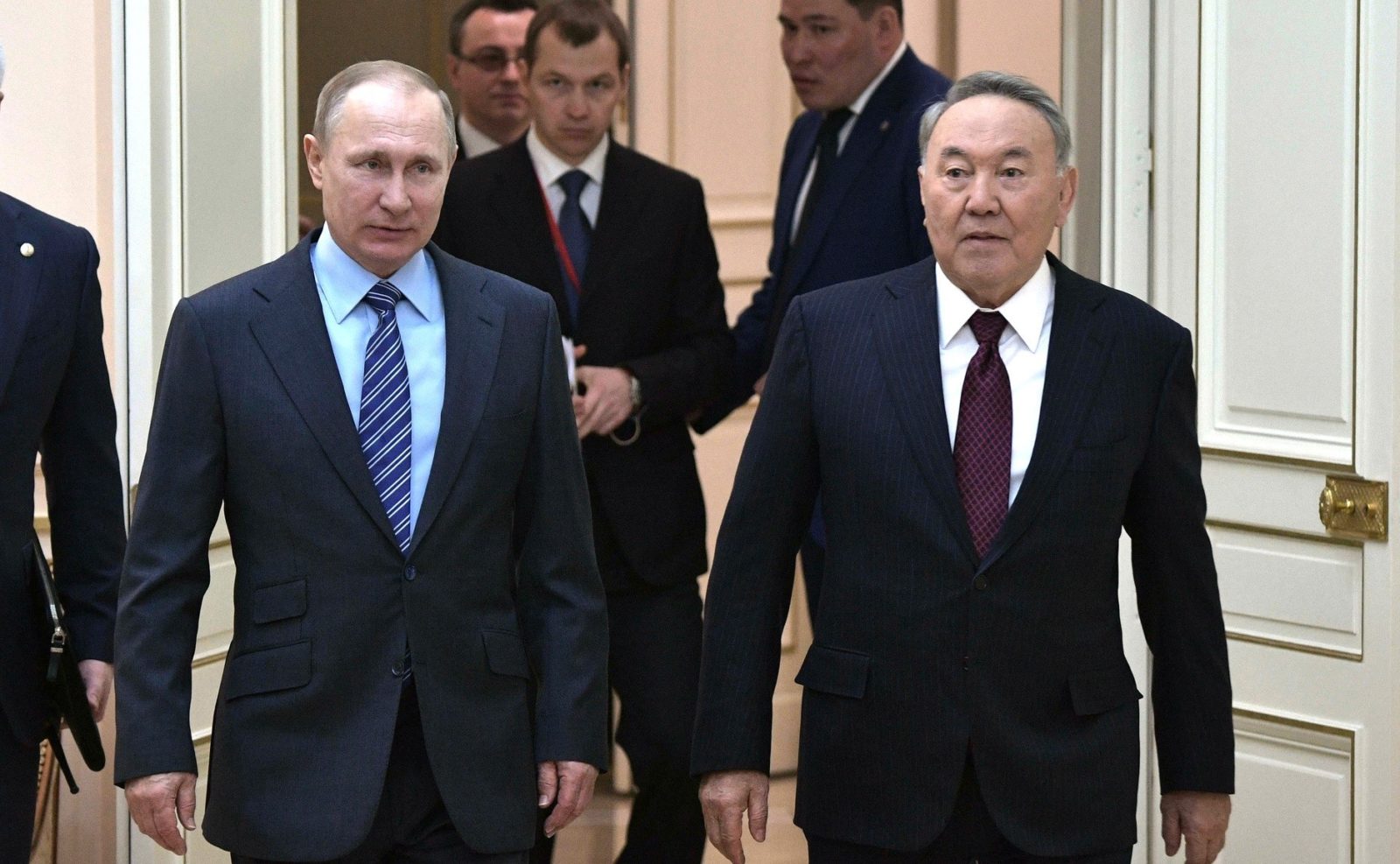Kazakhstan and Russia are close neighbors, allies and trade partners. Russia is often seen as the dominant one, but fresh statistics show that Kazakhstan is catching up. In some metrics, Kazakhstan’s numbers are even looking healthier. For instance, data from the World Bank reveal how Kazakhstan’s Purchasing Power Parity-adjusted GDP per capita exceeded Russia’s in 2015. Kazakhstan has maintained this lead ever since (See Fig. 1).

However, that trend draws on current international dollar rates. Another data set from the World Bank (Fig. 2) uses 2011 international dollar values and shows Russia maintaining its lead. Even here though, Kazakhstan has rapidly trimmed the gap since 2014, and may well overtake Russia in 2018 or 2019.
There is a lot of economist-speak about those metrics. But the calculation is not complex. It is about dividing the total production of the Kazakh economy by the country’s population. Then doing the same for Russia. The conclusion? The two countries are now neck-and-neck. The difference in whether the Kazakh economy is more productive per person or not depends on whether one uses current international dollar values or international dollars pegged to 2011 rates.
Then there is the GINI Coefficient. This measures the distribution of the country’s wealth among its population. A low score means lower inequality. In 2015, the ruble lost significant value but Kazakhstan’s currency held its ground. That meant average monthly wages in dollars in Kazakhstan and Russia equaled one another that year. At least according to the CIS Statistics committee.
The value of the Kazakh tenge later fell against the dollar. Lower inflation levels than Russia also factored into the mix. Consequently the gap re-emerged between Russia and Kazakhstan. But a recent analysis by Reconomica.ru finds that key staple goods are slightly cheaper in dollar terms in Kazakhstan than in Russia. That at least shows the country’s similar purchasing powers.
In the short term, it is unlikely that the tenge will appreciate significantly against the dollar. It still faces significant downside risks given the country’s dependence on commodities exports. Even so, if Kazakhstan’s recent fall in inflation holds and wages rise, the gap will likely narrow. But it is the growth outlook that highlights why this trend may be so important going forward.

Who is growing faster?
The World Bank currently predicts that Russia’s economy will grow between 1.5 and 1.8% between 2018 and 2020. It forecasts growth of 3.7% in 2018 for Kazakhstan. In the years after, the World Bank predicts 3%. If this trend holds through the end of 2018, the purchasing power of the average Kazakh will likely overtake that of the average Russian. This will be so even if wages in dollar terms do not exceed those of Russia.
Kazakhstan’s economy remains closely linked with Russia. Both have similar commodities-dependent economies. Each have seen notable inflation over the past four years. They share significant issues in the banking sector. Then again, these financial troubles have largely been contained. The rest of the economy remains cordoned off from financial sector risks. Additionally, both their debt-to-GDP ratios remain low.
The relatively rosy outlook for Kazakh growth compared to Russia raises a question: Why this is the case? One answer is oil. Kazakhstan has many major projects coming online. Oil field development continues in Russia as well, of course. Yet many of its projects involve shale and offshore resources that have been hit by US sanctions. In fact, the geopolitical situation in general now shines more favorably on Kazakhstan than Russia. Foreign Direct Investment on a per capita basis is now higher in Kazakhstan than Russia. Investors see higher risks in Russia. Besides, the Kazakh government is pushing ahead with its economic diversification program. Russia’s government is not. Neither has made significant progress.
That said, Kazakhstan’s economy is still commodities-dependent. It is a long way from a diversified economy. For the next three years, oil will dominate economic decision making. The country’s Kashagan project will remain a leading driver of growth. Kazakhstan never fully adhered to commitments agreed under the OPEC+ production deal. Kashagan helping it exceed the 2016 baseline by some 200,000 barrels per day. Extra production should be expected. Although it is not without risks as shown by Kazakhstan’s ongoing dispute with Moldovan businessman Anatol Stati. His firm, Ascom, saw part of its share in Kashagan frozen.
Aside from rosier prospects for the hydrocarbons sector, Astana has also benefited from trade with China. This has grown at a faster rate than Russian-Chinese trade. It has also spread across more sectors of the economy. Some notable barriers remain, particularly in land ownership and agriculture.
Key elements of the Kazakh government’s privatization program are anticipated, and though they have been delayed many times, there are signs of progress. Russia’s privatization efforts have all but ground to a halt in recent years. The state instead has opted instead to ramp up its role in the economy. Should Astana’s program go ahead as planned, it could speed up Kazakh growth further. But caution is necessary here. Diversification and increased competition are not guaranteed.
So, on current trends Kazakhstan will be a force to be reckoned with. The productivity and purchasing power of Kazakhs may well exceed, albeit narrowly, that of their neighbors in Russia by 2020. Cultural factors, educational opportunities, and Russia’s far larger population still count for something. Many in Kazakhstan will likely still look to Russia as a big brother or guiding partner. And the minimum wage or pensions in Kazakhstan will likely not come to rival those in Russia over this time. But a scenario where Kazakhstan’s economy is notably more productive on a per capita basis could prove self-reinforcing. It might attract more FDI away from Russia.
Impact on bilateral relations
This story may well prove the most important factor in bilateral relations over the coming years. Kazakhstan is the second largest partner in the Eurasian Economic Union. It is the only member state other than Russia of any meaningful size.So the body’s prospects will be shaped by their relative fortunes. Economic competition between Moscow and Astana will grow. Even in areas where that is not the intention of policy. For example, Moscow’s recently announced oil tax reforms will raise the cost of selling crude on via Kazakhstan or refining it there. And that is just as Kazakhstan finalizes upgrading its refineries.
These trends will spark up nationalist sentiment in Russia. Central Asia is often still seen as a cheap labor source. For now, Kazakh workers, particularly specialists, still head to Russia to find employment. But perhaps not for much longer. Migratory patterns from Kazakhstan are very different to those from the rest of Central Asia. The majority of population flows from Central Asia more generally are of unskilled workers. Soon enough, those on the nationalist fringe are bound to get upset. Why is a peripheral and undemocratic government providing more growth for its citizens? These nationalists have criticized Vladimir Putin in the past. Many have come closer to the Kremlin since it stoked up passions over the war in Ukraine. Though those loyalties are far from unconditional. The argument that Kazakhstan’s autocracy is more effective than Russia’s may even draw some support from other aspects of the fringe. Those such as Alexander Dugin have already praised the Kazakh autocracy. Russian liberals, meanwhile, may find greater traction. They have long argued against Russia’s noncompetitive practices and fixations with state controls. And those arguments will start to look more convincing as Kazakhstan’s dynamism becomes more visible.










